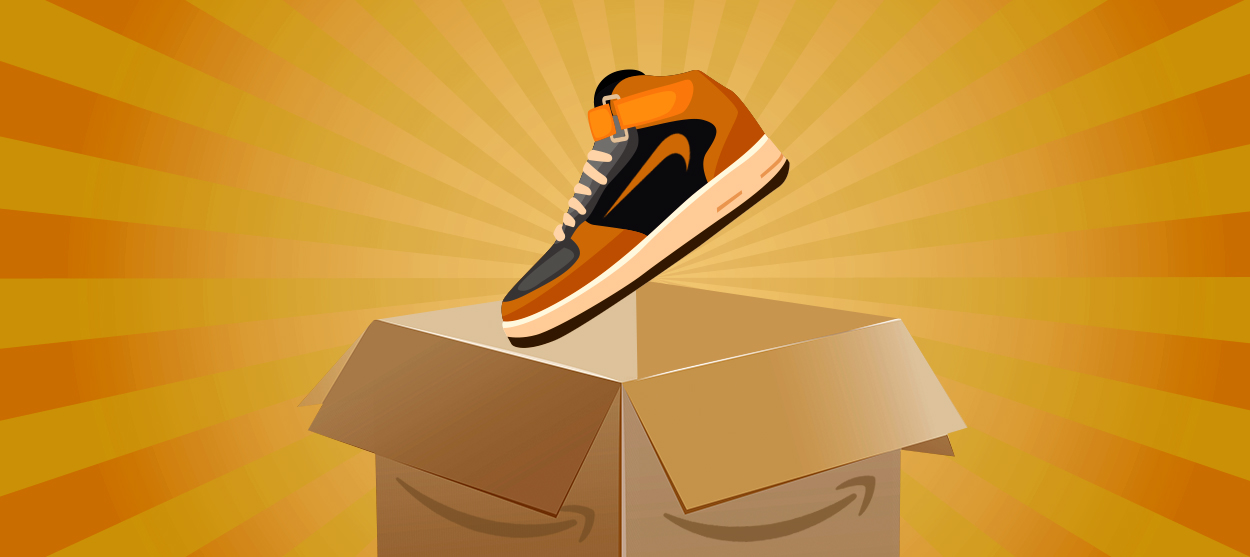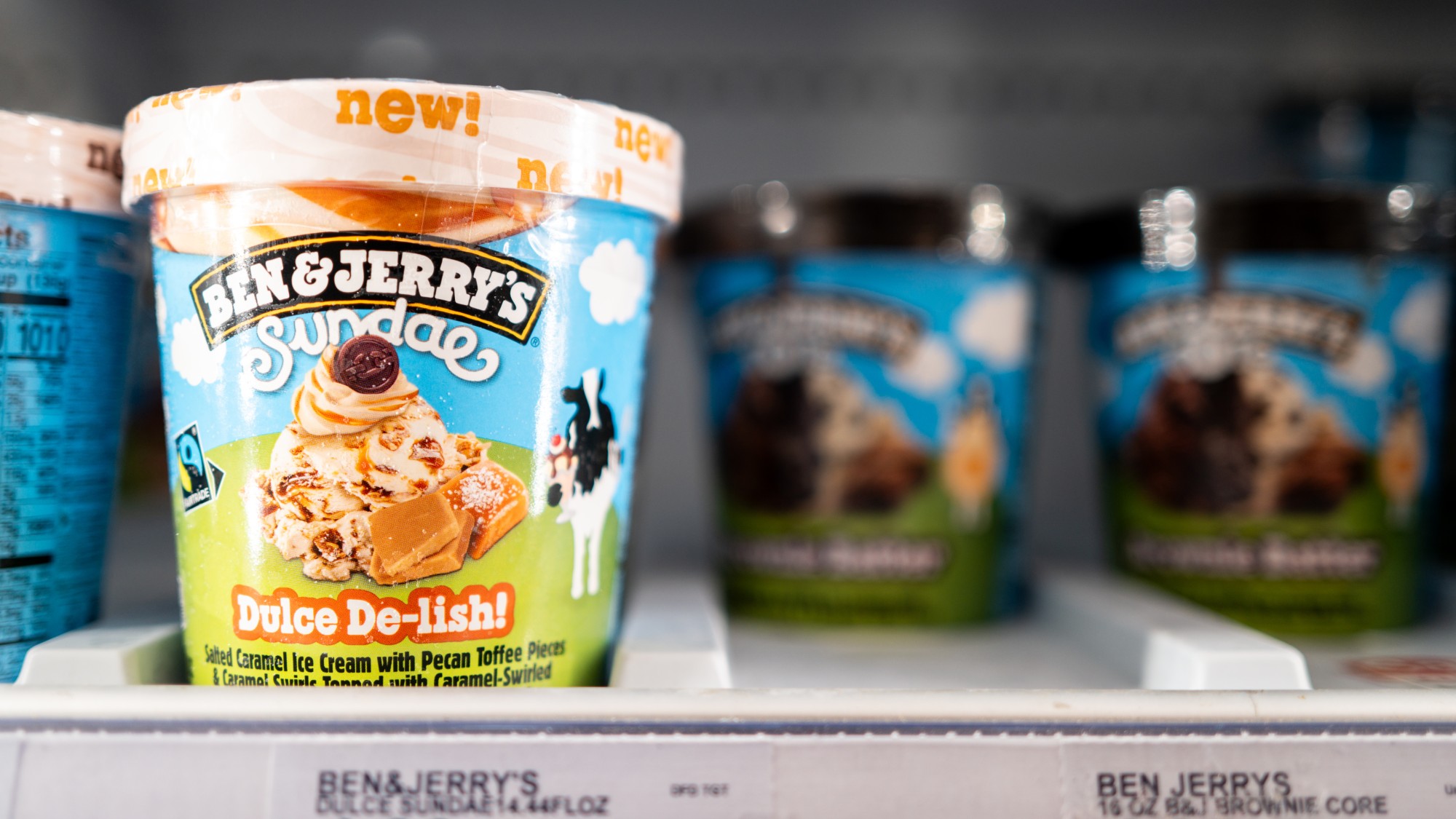Why counterfeit products thrive on Amazon
Millions of fraudulent products is an inevitable result of a scale-at-all-costs business strategy


As a lot of people probably won't be terribly surprised to learn, Amazon has something of a counterfeiter problem.
The Washington Post reported last week that the counterfeiters Amazon has caught amount to just 0.1 percent of its product pages. But that's still a staggering 17.6 million pages, and it's only the ones they've caught. Cheap knockoffs of low quality haunt the site. And while plenty are inconsequential luxury items, a fair amount are items where quality matters for people's well-being, like baby food.
Amazon, of course, extols its efforts and investments to police counterfeiters, and responds to critics that some amount of funny products are inevitable. But in many ways, an incursion of counterfeiters emerges naturally out of Amazon's business model, because that business model is a long-term strategy for monopoly dominance.
The Week
Escape your echo chamber. Get the facts behind the news, plus analysis from multiple perspectives.

Sign up for The Week's Free Newsletters
From our morning news briefing to a weekly Good News Newsletter, get the best of The Week delivered directly to your inbox.
From our morning news briefing to a weekly Good News Newsletter, get the best of The Week delivered directly to your inbox.
The point here begins with an idea called "predatory pricing." Ostensibly, competitors cutting their prices is a natural part of capitalist competition. If you can produce something more efficiently — which is to say, of equal quality but at lower cost — and pass that value on to customers, you can still make the same profit by gaining market share. But what can also happen is that big established players will just cut prices and operate at a loss, because their size allows them to absorb the pain while they drive competitors out of business. The efficiency gains that are the point of competition play no role here. It's just raw market power used to crush other businesses and corner a market.
Officially, predatory pricing is illegal under antitrust law. And in the middle of the 20th century, antitrust regulators went after predatory pricing aggressively. On a larger scale, they cut companies down to size on the general principle that "bigness" in markets was bad. But a legal revolution in the 1980s argued this approach was unacceptably political and squishy: free market principles meant that companies gouging customers with higher prices was the only clear sign of monopoly power that fell afoul of antitrust law. Short of that, regulators should leave companies alone. Predatory pricing is "a phenomenon that probably does not exist," wrote Robert Bork, one of the leading lights of the revolution. As a result, antitrust enforcement has been weak tea for the last few decades. And Amazon and its ilk have been allowed to use predatory pricing to grow unencumbered.
Now, a counter-revolution in antitrust thinking is brewing. A recent paper by Shaoul Sussman argued that Bork's framework can't really grapple with predatory pricing as it's practiced by big modern tech platforms like Amazon or Uber. Basically, investors are willing to give these companies endless supplies of financing to plug the holes created by cut-rate prices, precisely because they realize that pricing strategy will ultimately give the company total market dominance. This doesn't even have to ultimately end with price gouging customers after all the competition's gone, though it often does end that way. New technologies or scales may also allow the monopolist to finally make a profit even as prices remain low. The monopolist simply runs the market now.
Another recent influential paper by Lina Khan laid out a sweeping argument — focused on Amazon specifically — that the post-1980s antitrust framework simply doesn't account for the full dangers of monopoly power. For one thing, Americans aren't just consumers: We're also workers and entrepreneurs and citizens, and even if predatory pricing doesn't harm us as consumers, the concentrations of power it helps create can harm our society and democracy in other ways.
A free daily email with the biggest news stories of the day – and the best features from TheWeek.com
At first blush, Amazon may not seem like a monopoly: It commands something close to half of online retail, but a much smaller chunk of retail in total, and has nothing close to dominant market shares in any individual product market other than books. But Khan points out that the structure of Amazon's power throughout lots of various markets is much more far-reaching than these headline numbers suggest. The company regularly uses its algorithms to identify successful sellers, uses its pricing power to undermine them, and then buys them out to get their business for itself. This was how Amazon bought out the online diaper supplier Quidsi. And it's a strategy Amazon has used to scoop up business in everything from books to clothes and more.
This all brings us back to the problem of counterfeiters. Obviously no one wants them, and Amazon spent $400 million and assigned 5,000 personnel to combating the problem last year. But counterfeiters are also an obvious harm to consumers, just not one that's encapsulated by looking at price alone.
Sussman notes that it's impossible to know for sure if Amazon is using predatory pricing, unless regulators got a detailed look at its internal books — something that will only happen if the government starts aggressively pursuing antitrust cases again. But put Sussman and Khan's arguments together, and a flood of low-cost knockoffs emerges as a kind of inevitable condition necessary for Amazon's business model to function.
As the Post noted, the company's internal policies and infrastructure to combat counterfeiting seem to be in tension with the way Amazon's algorithms prioritize getting a wide array of cheap products in front of consumer eyeballs. One anonymous former Amazon executive said that the company cracked down on counterfeiters two years ago. Complaints from customers dropped, but the scale of Amazon's product selection slowed down its growth as well. So Amazon backtracked. "Because they are allowing so much onto the site, they can't handle the manual follow-up these things require," the executive told the Post. "It tells me they just don't want to find it. They want the selection."
"Counterfeiting is a problem considered a necessary evil when you're going to be selling at this volume," added Chris McCabe, a former Amazon investigator.
Essentially, combating counterfeiters presents a dilemma for Amazon. The company is famous for spitting out few profits to its shareholders. Yet investors stick with it because Amazon keeps relentlessly pursuing scale and market dominance, and they see the long-term prospects of that strategy. At the same time, the pursuit of scale creates the breeding ground for counterfeiters to spread and prosper. The only way to ultimately solve the problem is to sacrifice scale to create a more manageable ecosystem of sellers.
Amazon may not want to live with counterfeiters. But it can't live without them, either.
Want more essential commentary and analysis like this delivered straight to your inbox? Sign up for The Week's "Today's best articles" newsletter here.
Jeff Spross was the economics and business correspondent at TheWeek.com. He was previously a reporter at ThinkProgress.
-
 Phish food for thought: Ben & Jerry’s political turmoil
Phish food for thought: Ben & Jerry’s political turmoilIn the Spotlight After a landmark demerger by Unilever, spinning off their ice cream brands, a war of words over activism threatens to ‘overshadow’ the deal
-
 Magazine solutions - December 12, 2025
Magazine solutions - December 12, 2025Puzzles and Quizzes Issue - December 12, 2025
-
 ECHR: is Europe about to break with convention?
ECHR: is Europe about to break with convention?Today's Big Question European leaders to look at updating the 75-year-old treaty to help tackle the continent’s migrant wave
